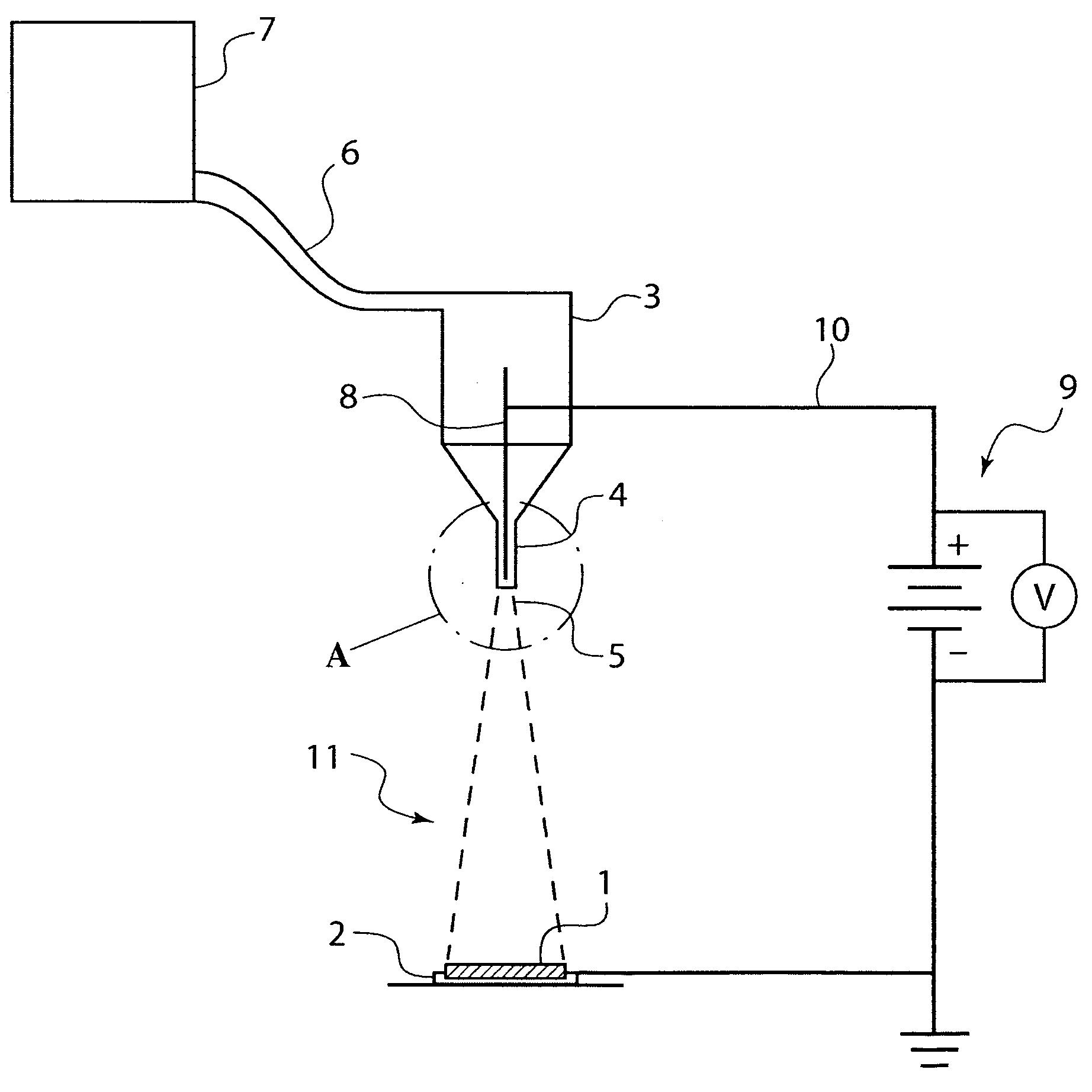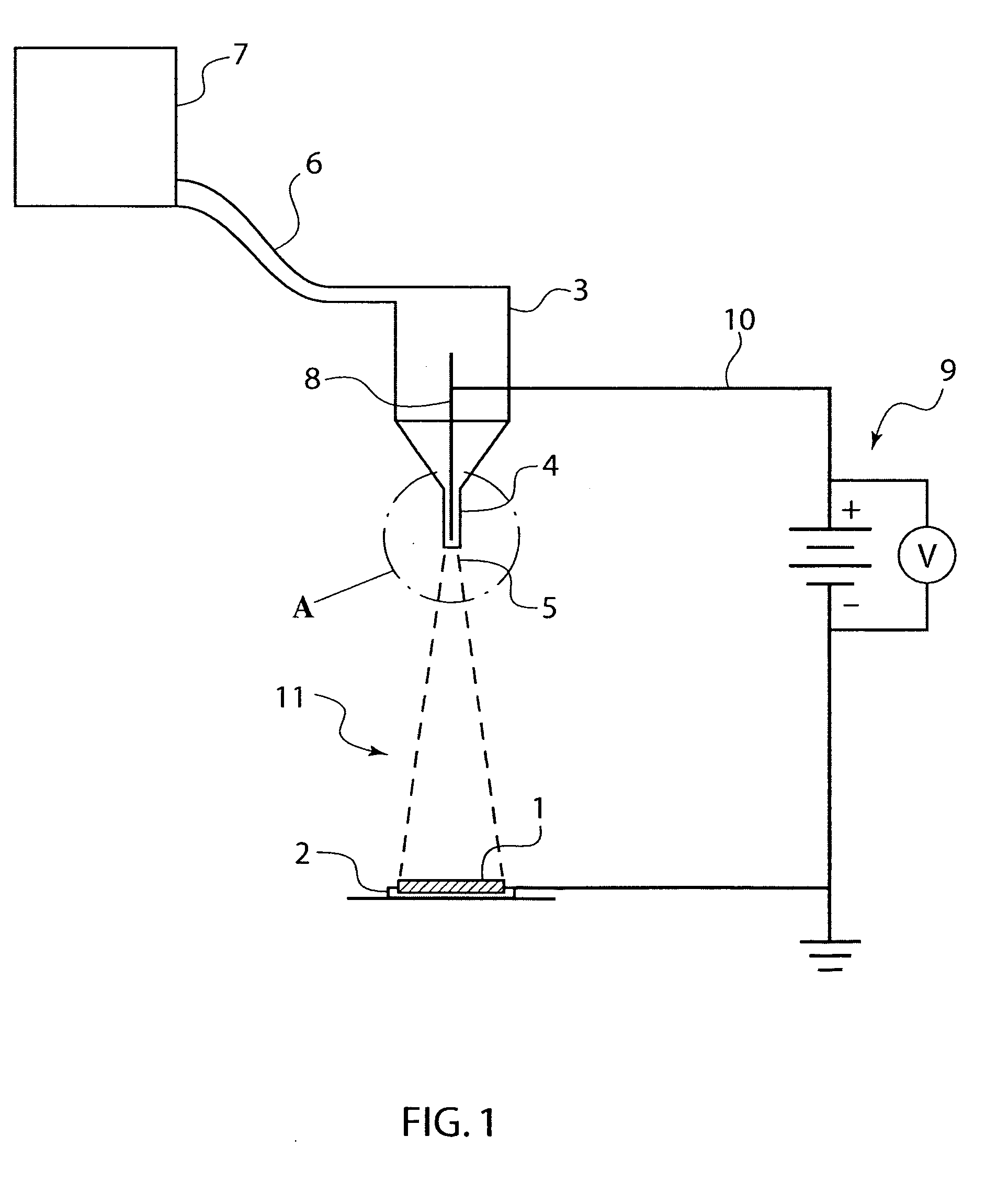Apparatus and method for field-injection electrostatic spray coating of medical devices
- Summary
- Abstract
- Description
- Claims
- Application Information
AI Technical Summary
Benefits of technology
Problems solved by technology
Method used
Image
Examples
Embodiment Construction
[0016] A first embodiment of the present invention is illustrated in FIG. 1. In this embodiment, a medical device 1 to be coated with a coating material is held and positioned by medical device holder 2. Medical device 1 in this instance is a stent that is to be coated with a therapeutic material. Although the medical device shown in FIG. 1 is illustrated as a stent, a variety of types of medical devices may be electrospray coated in the manner disclosed herein. In addition to holding stent 1 in a position suitable for coating application, medical device holder 2 can function as an electrode, and maintain the stent 1 and holder 2 at a first electrical potential. One of ordinary skill in the art would understand that medical device holder 2 may hold medical device 1 by any number of means, such as by the stent holders described in U.S. patent application Ser. No. 10 / 198,094, the disclosure of which is hereby expressly incorporated by reference herein. In the preferred embodiment, the...
PUM
 Login to View More
Login to View More Abstract
Description
Claims
Application Information
 Login to View More
Login to View More - R&D
- Intellectual Property
- Life Sciences
- Materials
- Tech Scout
- Unparalleled Data Quality
- Higher Quality Content
- 60% Fewer Hallucinations
Browse by: Latest US Patents, China's latest patents, Technical Efficacy Thesaurus, Application Domain, Technology Topic, Popular Technical Reports.
© 2025 PatSnap. All rights reserved.Legal|Privacy policy|Modern Slavery Act Transparency Statement|Sitemap|About US| Contact US: help@patsnap.com



